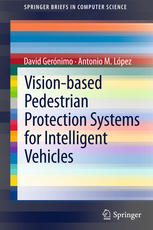

Most ebook files are in PDF format, so you can easily read them using various software such as Foxit Reader or directly on the Google Chrome browser.
Some ebook files are released by publishers in other formats such as .awz, .mobi, .epub, .fb2, etc. You may need to install specific software to read these formats on mobile/PC, such as Calibre.
Please read the tutorial at this link: https://ebookbell.com/faq
We offer FREE conversion to the popular formats you request; however, this may take some time. Therefore, right after payment, please email us, and we will try to provide the service as quickly as possible.
For some exceptional file formats or broken links (if any), please refrain from opening any disputes. Instead, email us first, and we will try to assist within a maximum of 6 hours.
EbookBell Team

4.1
100 reviewsPedestrian Protection Systems (PPSs) are on-board systems aimed at detecting and tracking people in the surroundings of a vehicle in order to avoid potentially dangerous situations. These systems, together with other Advanced Driver Assistance Systems (ADAS) such as lane departure warning or adaptive cruise control, are one of the most promising ways to improve traffic safety. By the use of computer vision, cameras working either in the visible or infra-red spectra have been demonstrated as a reliable sensor to perform this task. Nevertheless, the variability of human’s appearance, not only in terms of clothing and sizes but also as a result of their dynamic shape, makes pedestrians one of the most complex classes even for computer vision. Moreover, the unstructured changing and unpredictable environment in which such on-board systems must work makes detection a difficult task to be carried out with the demanded robustness. In this brief, the state of the art in PPSs is introduced through the review of the most relevant papers of the last decade. A common computational architecture is presented as a framework to organize each method according to its main contribution. More than 300 papers are referenced, most of them addressing pedestrian detection and others corresponding to the descriptors (features), pedestrian models, and learning machines used. In addition, an overview of topics such as real-time aspects, systems benchmarking and future challenges of this research area are presented.